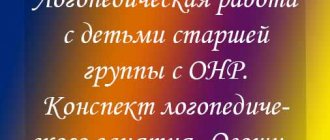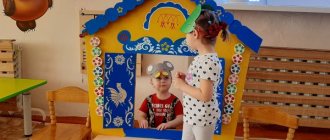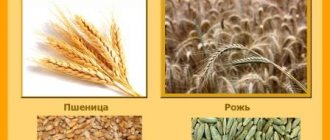Bread is the head of everything Development of a lesson on speech development
Technological map of organized educational activities
Educational area:
"Communication"
Sections:
"Speech development"
Subject:
“Bread is the head of everything”
Target:
Introduce the genre of oral folk art - proverbs about bread. Develop attention, memory, coherent speech. Develop the ability to creatively depict objects using plasticine. Develop artistic and aesthetic taste.
Equipment:
ears, wheat grains, poastilin, bases for modeling.
Vocabulary work:
"wheat, ear, combine, combine operator, baker, loaf"
Bilingual component:
“nan – bread”, “masak – ear - ear”
| Stages of activity | Teacher's actions | Children's actions |
| Motivational and incentive | Conducts a Circle of Joy “Gift” Reads folk sayings: “Bread is the head of everything”, “Take care of bread, take enough bread for dinner” | Stand in a circle and do exercises. They listen carefully and explain how they understood the meaning of the sayings. |
| Organizational search | Reminds me of the process of growing bread. The story is accompanied by illustrations from the book “How Bread Came to the Table.” Introduces proverbs: “If you don’t work, you won’t get bread”, “If you want to eat rolls, don’t sit on the stove” Physical school Pays attention to the ears of corn. He offers to make a panel. Shows the sequence of work. | They listen to the story, complement it, look at the illustrations, answer questions, and complement the answers of other children. They listen carefully and explain how they understood the meaning of the proverbs. They say in what cases they can be used. Perform physical education exercises. They look at the ears of corn, touch them, describe them. Observe the sequence of work. They start working on their own. |
| Reflexive-corrective | Organizes an exhibition of works. Offers to choose the best. Reads the fairy tale “Spikelet” He asks: does the proverb “He who doesn’t work, doesn’t eat” fit the fairy tale? Summarizes the lesson and notes the most active ones. Reads an excerpt from a poem by Y. Akim: Rye bread, loaves, rolls You won't get it while walking. People cherish bread in the fields They spare no effort for bread. | They help arrange the exhibition and evaluate the works. Listen to a fairy tale. Evaluate the actions of the heroes of the fairy tale. They answer questions about the lesson, share their impressions, and express their opinions. |
Expected Result:
Know:
features of growing bread, the structure of the ear.
Have:
an idea of the genre of oral folk art - proverbs and sayings, about the growth and development of plants.
Be able to:
perform sculpting techniques using a planar method (moulding).
Lesson on the topic “Bread is the head of everything”
Educator:
Do you want me to tell you how it got into the store?
Educator:
Flour is obtained from grains. But in order to obtain flour from grains, you need to spend a lot of labor and effort: first grow rye and wheat, then harvest. This is what grain growers do. Guys, do you want to know what kind of work this is?
Children:
Yes we want.
Educator:
Strong machines help people grow and harvest bread. In the spring, as soon as the ground thaws and dries out, a tractor comes out into the field to plow the ground. And so the earth became soft, docile and loose. Now you can start sowing! Seeders are attached to the tractor and they place wheat grains into the soil in even, neat rows. (slides 1,2)
The wheat has sprouted. All summer the grains ripen in the ears. The field is very beautiful at this time. (slide 3)
Let us also turn into grains that were sown in the field.
Physical school
A grain fell into the ground, (squat down) It began to sprout in the sun (hands above your head) The rain watered the ground, And the sprout grew (slowly stand up) It reached out to the light and warmth And turned into a handsome man. (2 times)
Educator:
Well, the grains are ripe. The harvest begins - this is the harvesting of the ears. (Children repeat the word in chorus and individually). Other machines enter the field - combines. Who works on the combine?
Children:
Combiner.
Educator:
What does a combine do? (slide 4)
Children:
Collects ears of corn.
Educator:
Combine - cuts the ears and threshes grains from them; these grains are poured through a special long sleeve into trucks, which constantly drive up at the signal of the combine operator. And large yellow shocks of threshed straw come out of the combiner's straw storage tank at certain intervals. Next, the cars transport the grain to elevators (Children repeat the word in chorus and individually) - special structures for storing grain. (slide 5) Where do you think grain is transported from elevators?
Children:
To the mill. (slide 6.7)
Educator:
That's right, and there the grain is ground into flour. Guys, where does the flour go then?
Children:
To a bakery, bakery. (slide 
Educator:
Right. At the bakery there are huge vats of sourdough. Flour, salt, sugar, water, yeast are added to the vat with the starter, and special machines use mechanical “hands” to knead the bread dough. And now the dough is kneaded and it’s time to put it in the mold and put it in the oven. And bakers bake it.
Educator:
Guys, listen to the poem:
Three boys along the alley, playing football as if, kicked a bun back and forth and scored a goal with it. An unfamiliar uncle walked past, stopped and sighed. And almost without looking at the guys, he extended his hand to that bun. “Who are you?” the children asked, forgetting about football for a while. “I’m a baker!” the man answered and slowly left with the bun. Educator:
Do you think the children behaved well? What was wrong with their behavior? How can you call their action? Why did the man pick up the bread? Do you think the children realized that they did the wrong thing by playing with bread like a soccer ball? Do we need to explain to them the importance of bread in human life? But during the war, many people died of hunger, without even a stale crust of bread. Therefore, bread should be treasured.




